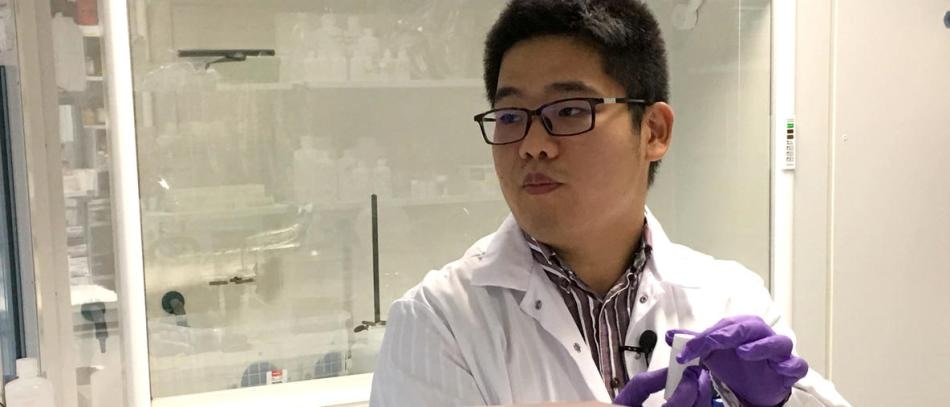Nov 23 2018
If the needed metals can be extracted from formerly quarried ore, the environmental hazards of new mines can be avoided and mining waste can be cut back.
 Wenzhong Zhang is an environmentalist from Shanghai, who in his doctoral thesis in the field of chemistry describes a method for capturing small quantities of rare-earth elements from the waste heaps of the aluminum industry. (Credit: University of Helsinki)
Wenzhong Zhang is an environmentalist from Shanghai, who in his doctoral thesis in the field of chemistry describes a method for capturing small quantities of rare-earth elements from the waste heaps of the aluminum industry. (Credit: University of Helsinki)
In his doctoral research, Wenzhong Zhang from the Department of Chemistry at the University of Helsinki designed a new material, with which scandium, one of the rare-earth metals, can efficiently be extracted from the waste of the aluminum sector.
The amount of bauxite necessary to manufacture one aluminum tin produces some 60 g of reddish, clay-like substance, red mud that used to be put in the sea. Now, it is building up in producer countries, like Greece, as ever-growing mounds, and there is presently more than three billion tons of this waste in the world.
The problem is that the minerals we want are hidden in the waste heaps in very small quantities, and we do not have efficient methods for extracting them.
Wenzhong Zhang, Department of Chemistry, University of Helsinki
In his study supported by the EU H2020 REDMUD project, Wenzhong Zhang concentrated on scandium, now a very exciting element because of its high cost and the mining of it that may soon start in Finland (the Rautalammi deposit). The use of scandium along with aluminum will make it possible to build more durable bicycles and airplanes, for instance, with a lighter structure.
A pinch of white powder remains at the bottom of the test tube. Is this the solution that will solve the issue of waste?
Wenzhong Zhang is creating new, functional materials, with which one can capture the metal that’s wanted as a clean element, while the rest of the waste remains.
The chemist’s job is like constructing something from building blocks. Once the blocks are arranged into place, a functional material is born with properties that can be further enhanced by engineers. Soon, the technique will be deployable on an industrial scale.
At the moment, the aluminium industry does not put its focus on the metal extraction methods. It is more interested in looking for solutions that will make an end to the mountains of waste.
Wenzhong Zhang, Department of Chemistry, University of Helsinki
At the University of Helsinki, the Academy of Finland-funded USEMA (Ultra-Selective Hybrid Materials for Separation of Group 3 and f-block Element) project started by Risto Koivula is creating new materials on the basis of the research group’s expertise in techniques of inorganic chemistry and ion exchange.
“There are many areas of application, such as transforming waste flows to raw material and development of new processes to destroy radioactive waste, or manufacturing radio-medicine,” says Koivula.
Pure Scandium from Waste
Producing one beverage can generate about 60 g of waste. Wenzhong Zhang has developed functional materials to valorize the waste material. (Credit: University of Helsinki)